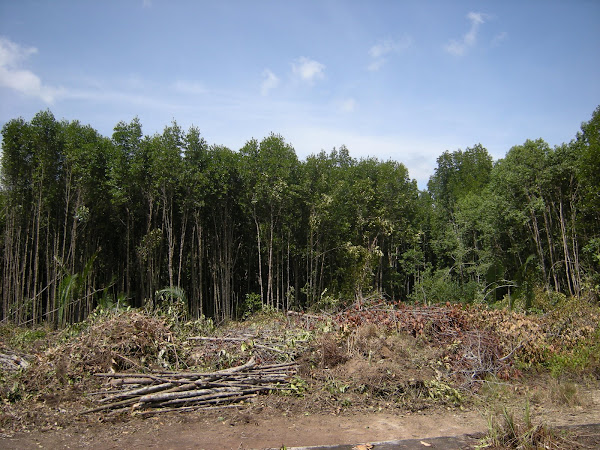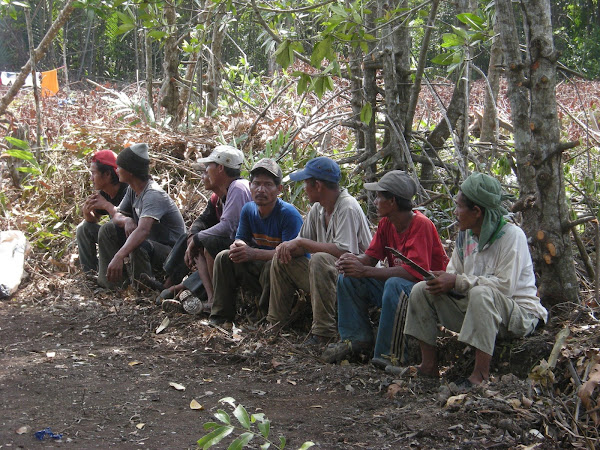Definition
Activated charcoal is a fine, black, odorless, and tasteless powder. It is made from wood or other materials that have been exposed to very high temperatures in an airless environment. It is then treated, or activated, to increase its ability to adsorb by reheating with oxidizing gas or other chemicals to break it into a very fine powder. Activated charcoal is pure carbon specially processed to make it highly adsorbent of particles and gases in the body's digestive system.
Activated charcoal has often been used since ancient times to cure a variety of ailments including poisoning. Its healing effects have been well documented since as early as 1550 B.C. by the Egyptians. However, charcoal was almost forgotten until 15 years ago when it was rediscovered as a wonderful oral agent to treat most overdoses and toxins.
Description
Activated charcoal's most important use is for treatment of poisoning. It helps prevent the absorption of most poisons or drugs by the stomach and intestines. In addition to being used for most swallowed poisons in humans, charcoal has been effectively used in dogs, rabbits, rats, and other animals, as well. It can also adsorb gas in the bowels and has been used for the treatment of gas or diarrhea. Charcoal's other uses such as treatment of viruses, bacteria, bacterial toxic byproducts, snake venoms and other substances by adsorption have not been supported by clinical studies. By adding water to the powder to make a paste, activated charcoal can be used as an external application to alleviate pain and itching from bites and stings.
Poisons and drug overdoses
It is estimated that one million children accidentally overdose on drugs mistaken as candies or eat, drink, or inhale poisonous household products each year. Infants and toddlers are at the greatest risk for accidental poisoning. Activated charcoal is one of the agents most commonly used for these cases. It can absorb large amounts of poisons quickly. In addition, it is non-toxic, may be stored for a long time, and can be conveniently administered at home. Charcoal works by binding to irritating or toxic substances in the stomach and intestines. This prevents the toxic drug or chemical from spreading throughout the body. The activated charcoal with the toxic substance bound to it is then excreted in the stool without harm to the body. When poisoning is suspected the local poison control center should be contacted for instructions. They may recommend using activated charcoal, which should be available at home so that it can be given to the poisoned child or pet immediately. For severe poisoning, several doses of activated charcoal may be needed.
Intestinal disorders
In the past, activated charcoal was a popular remedy for gas. Even before the discovery of America by Europeans, Native Americans used powdered charcoal mixed with water to treat an upset stomach. Now charcoal is being rediscovered as an alternative treatment for this condition. Activated charcoal works like a sponge. Its huge surface area is ideal for soaking up different substances, including gas. In one study, people taking activated charcoal after eating a meal with high gas-producing foods did not produce more gas than those who did not have these foods. Charcoal has also been used to treat other intestinal disorders such as diarrhea, constipation, and cramps. There are few studies to support these uses and there are also concerns that frequent use of charcoal may decrease absorption of essential nutrients, especially in children.
Other uses
Besides being a general antidote for poisons or remedy for gas, activated charcoal has been used to treat other conditions as well. Based on its ability to adsorb or bind to other substances, charcoal has been effectively used to clean skin wounds and to adsorb waste materials from the gastrointestinal tract. In addition, it has been used to adsorb snake venoms, viruses, bacteria, and harmful materials excreted by bacteria or fungi. However, because of lack of scientific studies, these uses are not recommended. Activated charcoal, when used together with other remedies such as aloe vera, acidophilus, and psyllium, helps to keep symptoms of ulcerative colitis under control. While charcoal shows some anti-aging activity in rats, it is doubtful if it can do the same for humans.
Preparations
For Poisoning
Activated charcoal is available without prescription. However, in case of accidental poisoning or drug overdose an emergency poison control center, hospital emergency room, or doctor's office should be called for advice. In cases where both syrup of ipecac and charcoal are recommended for treatment of the poison, ipecac should be given first. Charcoal should not be given for at least 30 minutes after ipecac or until vomiting from ipecac stops. Activated charcoal is often mixed with a liquid before being swallowed or put into the tube leading to the stomach. Activated charcoal is available as 30-gram liquid bottles. It is also available in 15-gram container sizes and as slurry of charcoal pre-mixed in water or as a container in which water or soda pop is added. Keeping activated charcoal at home is a good idea so that it can be taken immediately when needed for treatment of poisoning.
For acute poisoning, the dosage is as follows:
- infants (under 1 year of age): 1 g/kg
- children (1-12 years of age): 15-30 g or 1-2 g/kg with at least 8 oz of water
- adults: 30-100 g or 1-2 g/kg with at least 8 oz of water
For Diarrhea or Gas
A person can take charcoal tablets or capsules with water or sprinkle the content onto foods. The dosage for treatment of gas or diarrhea in adults is 520-975 mg after each meal and up to 5 g per day.
Precautions
Parents should keep activated charcoal on hand in case of emergencies.
Charcoal should not be taken together with syrup of ipecac, as the charcoal will adsorb the ipecac. Charcoal should be taken 30 minutes after ipecac or after the vomiting from ipecac stops.
Some activated charcoal products contain sorbitol. Sorbitol is a sweetener as well as a laxative, therefore, it may cause severe diarrhea and vomiting. These products should not be used in infants.
Charcoal may interfere with the absorption of medications and nutrients such as vitamins or minerals. For uses other than for treatment of poisoning, charcoal should be taken two hours after other medications.
Charcoal should not be used to treat poisoning caused by corrosive products such as lye or other strong acids or petroleum products such as gasoline, kerosene, or cleaning fluids. Charcoal may make the condition worse and delay diagnosis and treatment. In addition, charcoal is also not effective if the poison is lithium, cyanide, iron, ethanol, or methanol.
Parents should not mix charcoal with chocolate syrup, sherbet, or ice cream, even though it may make charcoal taste better. These foods may prevent charcoal from working properly.
Activated charcoal may cause swelling or pain in the stomach. A doctor should be notified immediately. It has been known to cause problems in people with intestinal bleeding, blockage or those people who have had recent surgery. These patients should talk to their doctor before using this product.
Charcoal may be less effective in people with slow digestion.
Charcoal should not be given for more than three or four days for treatment of diarrhea. Continuing for longer periods may interfere with normal nutrition.
Charcoal should not be used in children under three years of age to treat diarrhea or gas.
Activated charcoal should be kept out of reach of children.
Side Effects
Charcoal may cause constipation when taken for overdose or accidental poisoning. A laxative should be taken after the crisis is over.
Activated charcoal may cause the stool to turn black. This is to be expected.
Pain or swelling of the stomach may occur. A doctor should be consulted.
Interactions
Activated charcoal should not be mixed together with chocolate syrup, ice cream or sherbet. These foods prevent charcoal from working properly.
Resources
Books
Blumenthal, Mark. Linden Charcoal. The Complete German Commission E Monographs, Therapeutic Guide to Herbal Medicines, American Botanical Council, Boston: Integrative Medicine Communications, 1998. Accessed online. http://home.mdconsult.com.
Cooney, David. Activated Charcoal: Antidote, Remedy, and Health Aid. Brushton, NY: TEACH Services, Inc., 1999.
Lacy Charles F., Lora L. Amstrong, Naomi B. Ingrim, and Leonard L. Lance. Charcoal. The Drug Information Handbook Pocket Version: 1998-1999, Hudson, OH: Lexi-Comp Inc., 1998.
Roberts. Activated Charcoal. Clinical Procedures in Emergency Medicine, Philadelphia, PA: W. B. Saunders Company, 1998: 726-8. Accessed online. http://home.mdconsult.com.
Wilson, Billie A., Margaret T. Shannon, and Carolyn L. Stang. Charcoal, Activated (Liquid Antidote). Nurses Drug Guide 2000, Stamford, CT: Appleton & Lange, 2000.
Periodicals
Bond, C. Randall. "Activated Charcoal in the Home: Helpful and Important or Simply a Distraction." Pediatrics (January 2002) : 145.
[Article by: Mai Tran; Teresa G. Odle]
— Mai Tran








Tidak ada komentar:
Posting Komentar